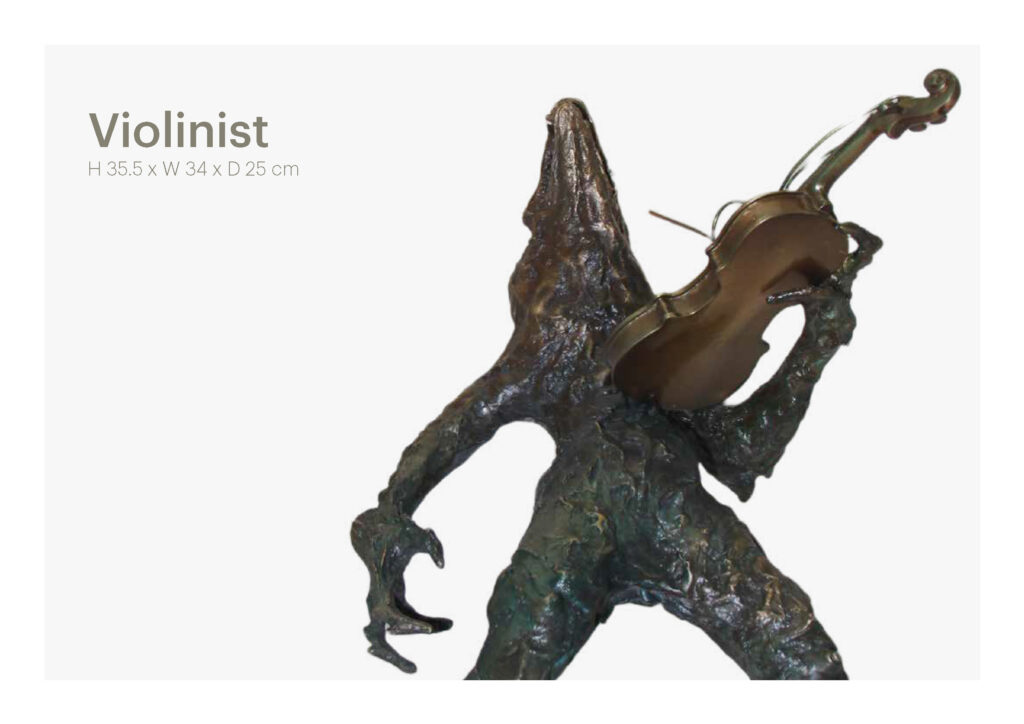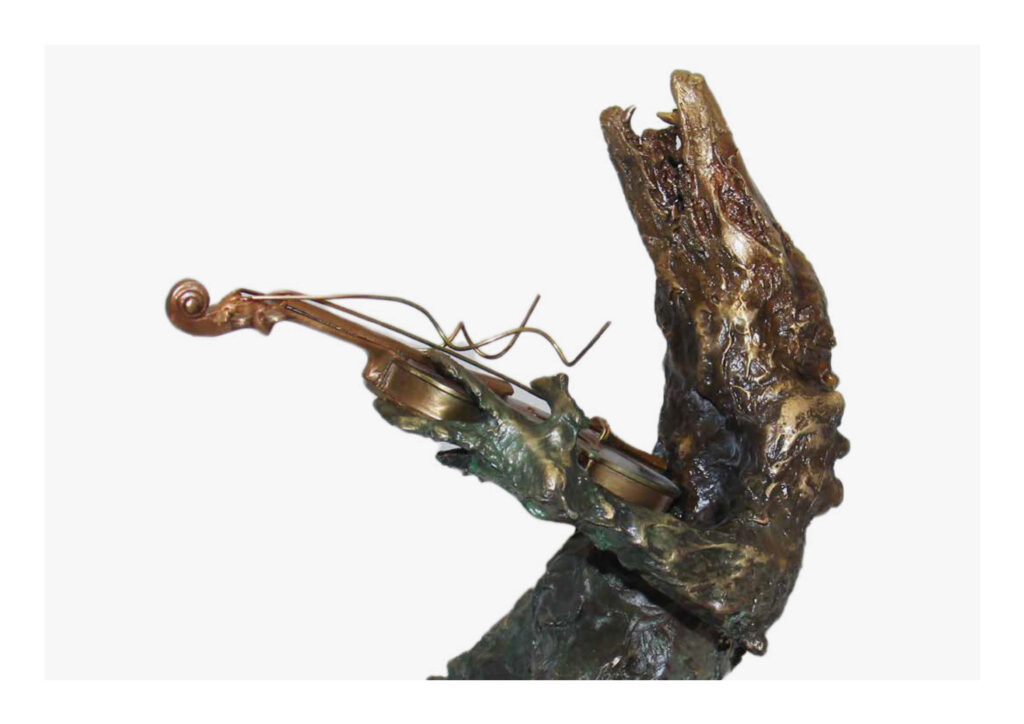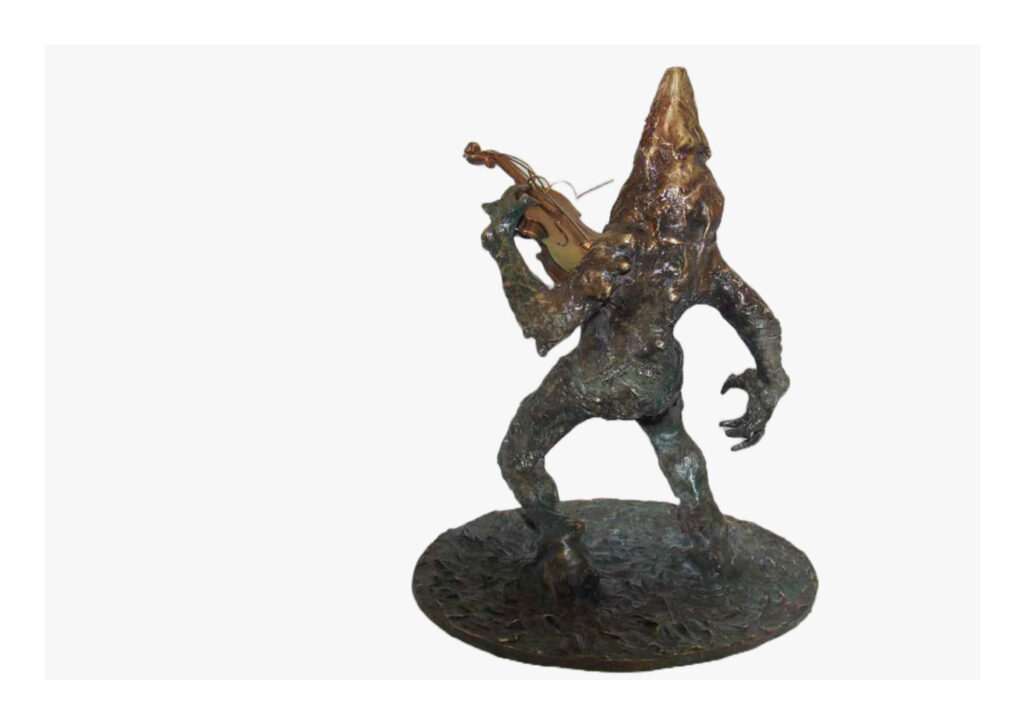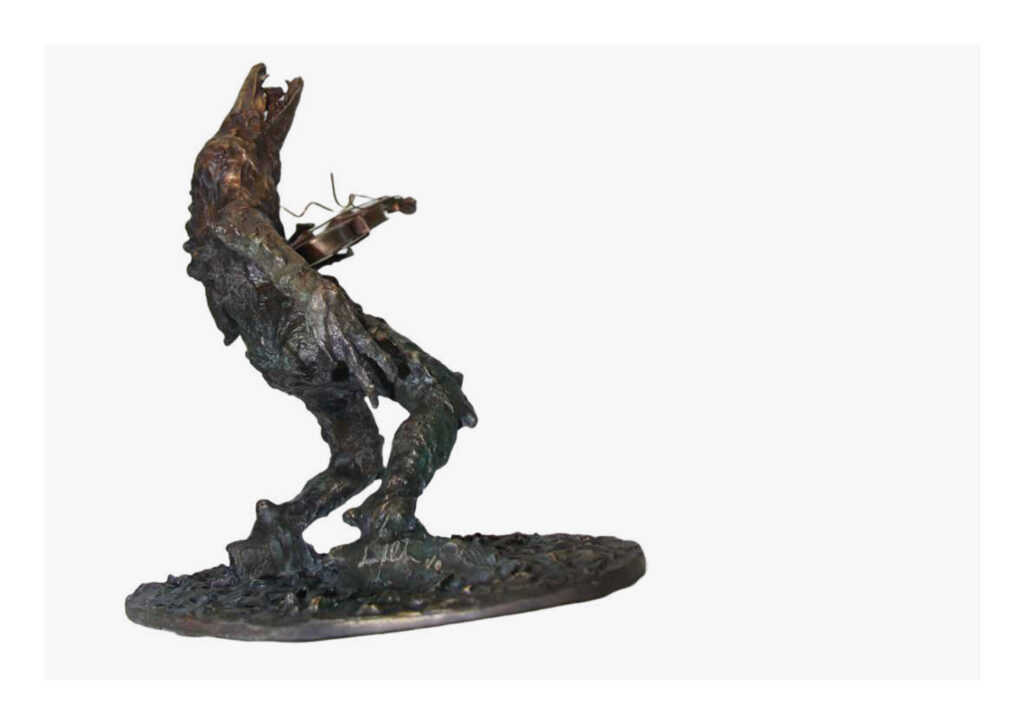Listen to Curatorial Text • Read Curatorial Text
Music: 24 Preludes for Violin and Piano “no. 24 in D minor”




A contorted figure emerges in Auerbach’s “Violinist,” a synthesis transcending a mere human and animal identity amalgamation. This chimeric being resonates with the creatures of classical antiquity and the grotesqueries hidden in the alcoves of Gothic cathedrals. With an upturned face as an aperture towards an unseen heaven, the beast appears to channel not a howl but an existential cry reminiscent of the Minotaur’s primal and timeless anguish, trapped within a self-imposed labyrinth.
In the figure’s left hand, a violin is clutched and thrust into the chest, a desperate act of self-expression. The broken and disconsolate strings intensify the despair and confusion, forging a visual metaphor for discord and shattered harmony. Here, the violence of the act, the fusion of human and beast, and the contorted posture converge to weave a dark tale about the fine line between creation and destruction, passion and madness.
Beyond the immediate narrative, the work addresses a more profound artistic struggle—the agonizing gap between the artist’s vision and the constraints of reality. It articulates the frustration of an inability to reach ideal perfection, a perfection unattainable by definition, and this ceaseless pursuit resonates with the creature’s torment.
The portrayal of the violin as an instrument of art and an emblem of conflict enhances the work’s complexity. It becomes a symbol of the artist’s voice, sometimes stifled by its intensity and the burden of expectation. Auerbach’s creation crafts a visual exploration of the eternal struggle between perfection and imperfection, summoning the viewer into the inherent chaos lurking within art and creativity.
By intertwining the musical with the monstrous, Auerbach orchestrates a symphony of conflicting emotions, weaving a dark tale where passion and madness are fused, reflecting the artist’s inner turmoil. The “Violinist” serves as a poignant reminder of the dual nature of art, where beauty and horror coalesce, and the quest for perfection can become both a driving force and a haunting obstacle. It stands as an evocative embodiment of the universal human experience, resonating with themes of aspiration, despair, and the often-tumultuous journey of self-expression.